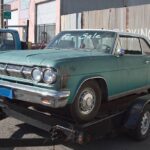For RC car enthusiasts looking to enhance their models with 3D printed components, selecting the right material and printing technique is paramount. While numerous options exist, not all are created equal when it comes to durability and performance. This guide delves into the optimal choices for 3D printing robust RC car parts, drawing from practical experience in the field.
Material Matters: Beyond Initial Impressions
When venturing into 3D printing RC car parts, the material you choose significantly impacts the final product’s strength and resilience. A common initial thought might be to use ABS, but for demanding applications like RC cars, this might not be the best starting point.
Why ABS May Fall Short
Despite its widespread use in 3D printing, ABS has limitations, particularly concerning layer adhesion. Compared to materials like Nylon or PET-G, ABS layers don’t bond as strongly. While acetone post-processing is sometimes suggested to fuse layers, experience indicates this is largely cosmetic and doesn’t drastically improve structural integrity. Furthermore, ABS is prone to warping and cracking, especially in open-frame printers, making it challenging to print consistently, particularly for larger or more complex RC car parts.
PET-G: A Strong Contender for Initial Prints
For those beginning their 3D printing journey for RC cars, PET-G emerges as a highly recommended material. It often provides sufficient strength for many parts and boasts a significant advantage in printability compared to ABS and even Nylon. PET-G is less susceptible to warping, making it easier to use across a broader range of 3D printer setups. Its affordability compared to Nylon also makes it an economical choice for prototyping and testing part designs before committing to more expensive materials.
Nylon: The Choice for Ultimate Durability
When ultimate strength and durability are required, Nylon stands out as the superior material for 3D printed RC car parts. While it can be slightly more challenging to print than PET-G, the performance benefits are undeniable. Specific Nylon filaments like Taulman 910 offer an excellent balance of strength and a smooth finish. While slightly flexible compared to stock RC car parts, Taulman 910 maintains impressive durability and is relatively user-friendly for a Nylon filament.
For even greater stiffness and strength, glass fiber reinforced Nylon filaments, such as those from Eumaker (in Europe), can be considered. These filaments demand more specialized printing setups, including hardened steel nozzles due to their abrasive nature, and support removal can be more difficult. However, the increased stiffness and layer adhesion make them ideal for parts subjected to high stress.
Printing Techniques for Enhanced Strength
Beyond material selection, the way you print your RC car parts is crucial for maximizing their strength. Understanding the inherent properties of FDM 3D printing is key. Strength between layers will always be less than the strength within a single extrusion line of plastic – estimated to be around 60-70%. Therefore, orienting your prints strategically is vital.
Print Orientation: Aligning for Strength
For parts like suspension arms, printing them upright is often the most effective approach. This orientation ensures that critical bolt holes are enclosed within continuous loops of plastic, maximizing strength in the areas most prone to stress during impacts. Printing arms flat, while easier, makes them highly susceptible to breakage at the bolt holes due to weaker layer lines in this high-stress zone. While upright printing might increase the risk of torsional stress causing cracks along the length of the arm, using materials with good layer adhesion, like Nylon or PET-G, mitigates this risk effectively. Furthermore, even if a crack does occur, an upright printed arm is likely to remain partially functional, held together by the suspension pin and chassis mount, potentially allowing you to finish a race or driving session.
The principle of printing parts at a 45-degree angle to distribute stress across multiple directions is also valuable, although not always feasible depending on the part geometry.
Infill: Triangles for Structural Integrity
For infill patterns, triangles are a highly recommended choice. Triangular infill is mechanically sound, providing excellent load distribution and printability compared to other patterns.
Resources for 3D Printable RC Car Parts
Numerous online resources offer 3D models for RC car parts. Thingiverse is a popular platform with a wide variety of user-created designs. For more professionally designed and complex models, Grabcad is an excellent resource, though it leans towards professional CAD designs rather than exclusively 3D printable models. Nevertheless, you can find complete RC car designs, such as detailed first-generation SC10 models, on Grabcad.
Conclusion: 3D Printing Opens Possibilities
3D printing offers RC car enthusiasts a fantastic avenue for creating custom and replacement parts. While some parts may prove challenging to print reliably, with experience in material selection, strategic design considerations, and optimized printing techniques, a reliable FDM 3D printer becomes an invaluable tool for any RC car hobbyist. Experimentation and iterative design are key to unlocking the full potential of 3D printing for enhancing your RC car experience.
